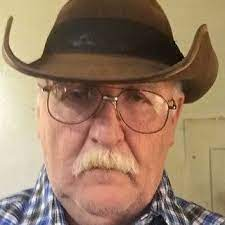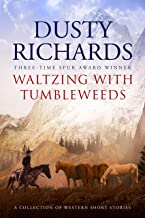On This Day in the Old West: May 13
We’ve been looking at a variety of serious subjects in this series: natural disasters, inventions, etc. Today, let’s have a little levity. On this date in the year 1888, famous Vaudevillian DeWolf Hopper (some sources report it as Hooper) supposedly first recited the comic poem “Casey at the Bat,” published earlier that year. Of course, once I started researching, the dates are fuzzy, with some reporting the poem’s publication as June & the recitation therefore in July or August. But I’ll stick with the May 13th date so we can include the story here.
By his own reckoning, the actor figured he’d recited the verses at least 10,000 times during his long career. If you’d like to see a very short clip of DeWolf’s recitation, here’s a video from the early part of the 1900s.
https://www.youtube.com/watch?v=ZiIRBITC374
and this one’s from a 1906 Victrola recording of DeWolf’s performance if you’d like to listen to the full poem:
https://www.youtube.com/watch?v=1G2HN_1DRUo
I’m laughing nearly as hard at the melodramatic performance of DeWolf Hopper as I am at the words of the poem, which, by the way, are right here:
Casey at the Bat
Ernest Lawrence Thayer - 1863-1940
The outlook wasn't brilliant for the Mudville nine that day:
The score stood four to two, with but one inning more to play,
And then when Cooney died at first, and Barrows did the same,
A pall-like silence fell upon the patrons of the game.
A straggling few got up to go in deep despair. The rest
Clung to the hope which springs eternal in the human breast;
They thought, "If only Casey could but get a whack at that—
We'd put up even money now, with Casey at the bat."
But Flynn preceded Casey, as did also Jimmy Blake,
And the former was a hoodoo, while the latter was a cake;
So upon that stricken multitude grim melancholy sat,
For there seemed but little chance of Casey getting to the bat.
But Flynn let drive a single, to the wonderment of all,
And Blake, the much despisèd, tore the cover off the ball;
And when the dust had lifted, and men saw what had occurred,
There was Jimmy safe at second and Flynn a-hugging third.
Then from five thousand throats and more there rose a lusty yell;
It rumbled through the valley, it rattled in the dell;
It pounded on the mountain and recoiled upon the flat,
For Casey, mighty Casey, was advancing to the bat.
There was ease in Casey's manner as he stepped into his place;
There was pride in Casey's bearing and a smile lit Casey's face.
And when, responding to the cheers, he lightly doffed his hat,
No stranger in the crowd could doubt 'twas Casey at the bat.
Ten thousand eyes were on him as he rubbed his hands with dirt;
Five thousand tongues applauded when he wiped them on his shirt;
Then while the writhing pitcher ground the ball into his hip,
Defiance flashed in Casey's eye, a sneer curled Casey's lip.
And now the leather-covered sphere came hurtling through the air,
And Casey stood a-watching it in haughty grandeur there.
Close by the sturdy batsman the ball unheeded sped—
"That ain't my style," said Casey. "Strike one!" the umpire said.
From the benches, black with people, there went up a muffled roar,
Like the beating of the storm-waves on a stern and distant shore;
"Kill him! Kill the umpire!" shouted someone on the stand;
And it's likely they'd have killed him had not Casey raised his hand.
With a smile of Christian charity great Casey's visage shone;
He stilled the rising tumult; he bade the game go on;
He signaled to the pitcher, and once more the dun sphere flew;
But Casey still ignored it and the umpire said, "Strike two!"
"Fraud!" cried the maddened thousands, and echo answered "Fraud!"
But one scornful look from Casey and the audience was awed.
They saw his face grow stern and cold, they saw his muscles strain,
And they knew that Casey wouldn't let that ball go by again.
The sneer is gone from Casey's lip, his teeth are clenched in hate,
He pounds with cruel violence his bat upon the plate;
And now the pitcher holds the ball, and now he lets it go,
And now the air is shattered by the force of Casey's blow.
Oh, somewhere in this favoured land the sun is shining bright,
The band is playing somewhere, and somewhere hearts are light;
And somewhere men are laughing, and somewhere children shout,
But there is no joy in Mudville—mighty Casey has struck out.
As hilarious as the poem is, it’s hard to imagine it would be as well-known or beloved today if not for the dedicated support and “vivacious performance” that Hopper brought to the work, first on stage and then in that popular 1906 recording. Cary O’Dell reported that the poem was published several times without an author’s byline before catching the eye of writer Archibald Gunter when it ran in the New York Sun. He clipped the poem and stuck it into his wallet. Gunter just happened to be friends with famous stage actor DeWolf Hopper, a 6’5” actor/comedian with a deep, booming voice. Hopper was one of Broadway’s leading players and a lifelong baseball fanatic.
It was Hopper who suggested to the opera house’s owners that they host, for one performance only, the home team New York Giants and the visiting Chicago White Stockings. Hopper, determined to make the evening memorable and different, started looking around for something to perform. His friend Gunter passed over the clipping of “Casey at the Bat” and Hopper quickly memorized it. The recitation was an immediate hit.
In his autobiography, “Once a Clown, Always a Clown,” Hopper related “I thought at the time that I was merely repeating a poem, a fatherless waif clipped from a San Francisco newspaper. As it turned out I was launching a career, a career of declaiming those verses up and down this favored land the balance of my life.”
“Throughout the remainder of his career,” O’Dell reports, “almost every one of his curtain calls, regardless of the production, would bring shouts for “Casey.” They were requests that Hopper was happy to oblige. And, then, once again, for five minutes and 40 seconds, he would work himself up and repeat once more Casey’s less-than-triumphant tale.”
If your characters were around in 1888, whether it was May or August, they may have seen a performance of this poem—maybe even by the great DeWolf Hopper himself. The poem became a favorite, even among those who weren’t baseball fans. Listen to the recording and imagine your character sitting back in their seat at the theater, with tears of laughter rolling down their cheeks.
J.E.S. Hays
www.jeshays.com
www.facebook.com/JESHaysBooks



.png)











